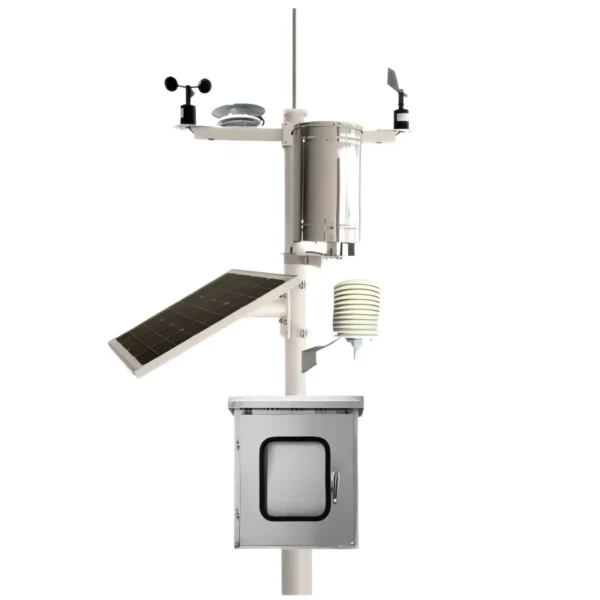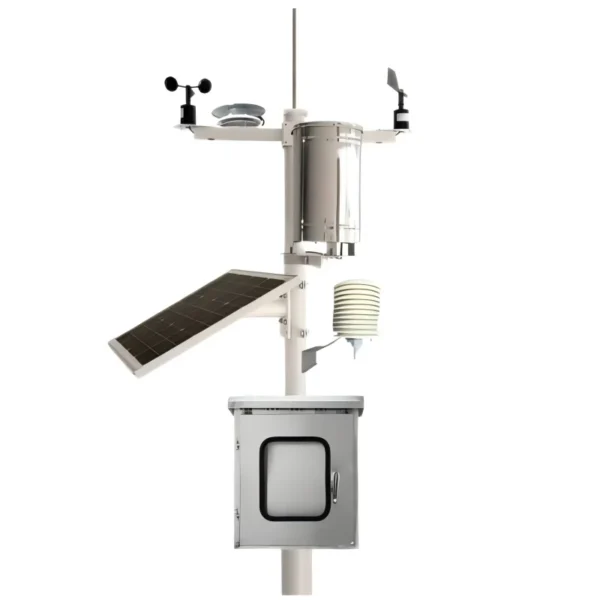
# Automatic Weather Station: Advancements and Applications in Modern Meteorology
Automatic Weather Stations (AWS) have revolutionized the way we collect and analyze meteorological data. These sophisticated systems are designed to measure various atmospheric parameters automatically, providing real-time data that is crucial for weather forecasting, climate research, and environmental monitoring.
## The Evolution of Automatic Weather Stations
The concept of weather stations dates back to the 19th century, but the advent of modern technology has transformed them into highly efficient and reliable tools. Early weather stations required manual observation and recording, which was time-consuming and prone to human error. With the introduction of AWS, the process has become automated, ensuring continuous and accurate data collection.
### Key Components of an Automatic Weather Station
An AWS typically consists of several key components:
– **Sensors**: These are the core elements that measure various atmospheric parameters such as temperature, humidity, wind speed, wind direction, precipitation, and atmospheric pressure.
– **Data Logger**: This device records the data collected by the sensors and stores it for further analysis.
– **Communication System**: AWS are often equipped with communication modules that transmit data to a central server or database in real-time.
– **Power Supply**: Most AWS are powered by solar panels, ensuring they can operate in remote locations without access to the electrical grid.
## Advancements in AWS Technology
Recent advancements in AWS technology have significantly enhanced their capabilities. Some of the notable improvements include:
– **Increased Accuracy**: Modern sensors are more precise, providing highly accurate measurements even in extreme weather conditions.
– **Enhanced Durability**: AWS are now built to withstand harsh environmental conditions, ensuring long-term reliability.
– **Integration with IoT**: The integration of AWS with the Internet of Things (IoT) allows for seamless data sharing and remote monitoring.
– **Data Analytics**: Advanced data analytics tools enable meteorologists to process and interpret vast amounts of data quickly, improving the accuracy of weather forecasts.
## Applications of Automatic Weather Stations
AWS have a wide range of applications in various fields:
### Weather Forecasting
One of the primary uses of AWS is in weather forecasting. The real-time data collected by these stations is crucial for predicting weather patterns and issuing timely warnings for severe weather events such as hurricanes, tornadoes, and floods.
### Climate Research
AWS play a vital role in climate research by providing long-term data on atmospheric conditions. This data is essential for understanding climate change and developing strategies to mitigate its impact.
### Agriculture
Farmers rely on AWS to monitor weather conditions that affect crop growth. Accurate weather data helps in making informed decisions about planting, irrigation, and harvesting, ultimately improving agricultural productivity.
### Aviation
In the aviation industry, AWS are used to monitor weather conditions at airports and along flight paths. This information is critical for ensuring the safety and efficiency of air travel.
### Environmental Monitoring
AWS are also used for environmental monitoring, helping to track air quality, pollution levels, and other environmental parameters. This data is essential for developing policies to protect the environment and public health.
## Conclusion
Automatic Weather Stations have become indispensable tools in modern meteorology. Their ability to provide accurate, real-time data has transformed weather forecasting, climate research, and various other fields. As technology continues to advance, we can expect AWS to become even more sophisticated, further enhancing our understanding of the atmosphere and its impact on our lives.
Keyword: automatic weather station
